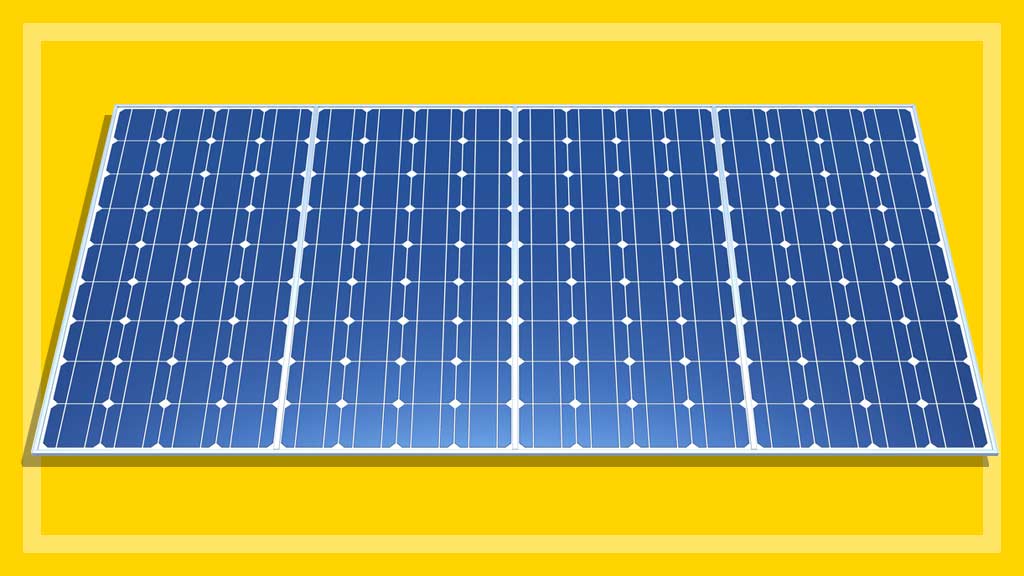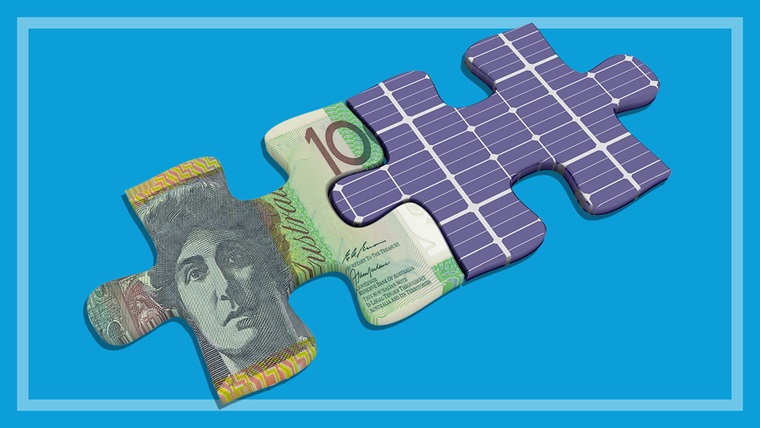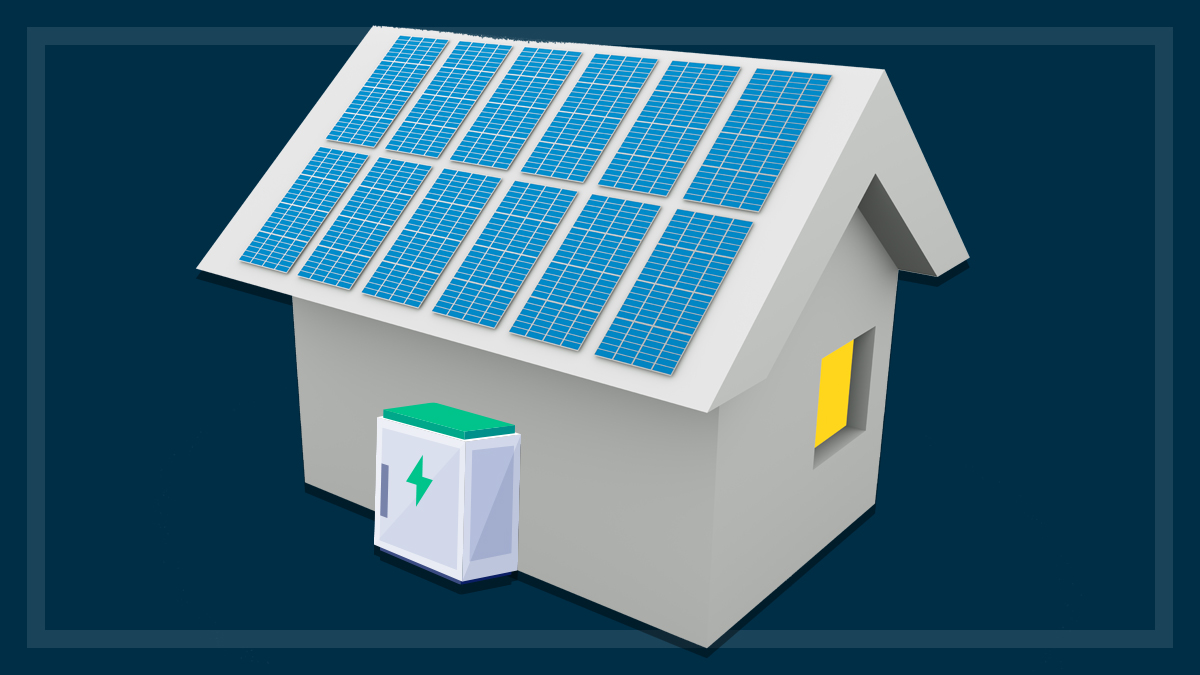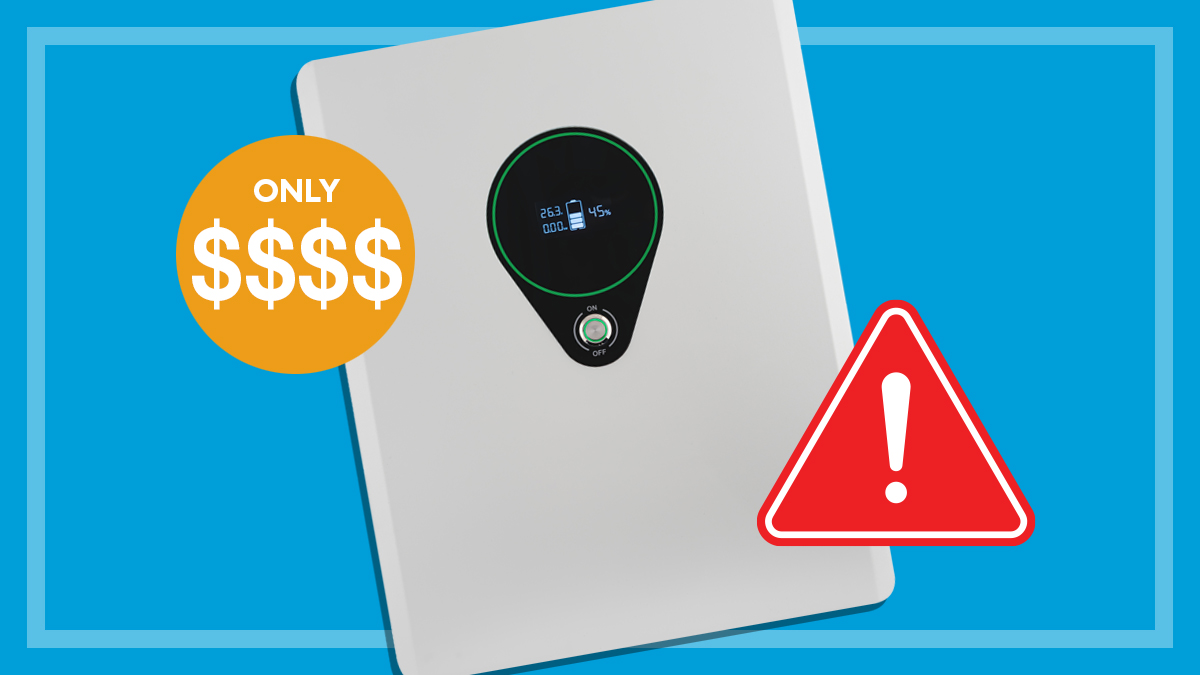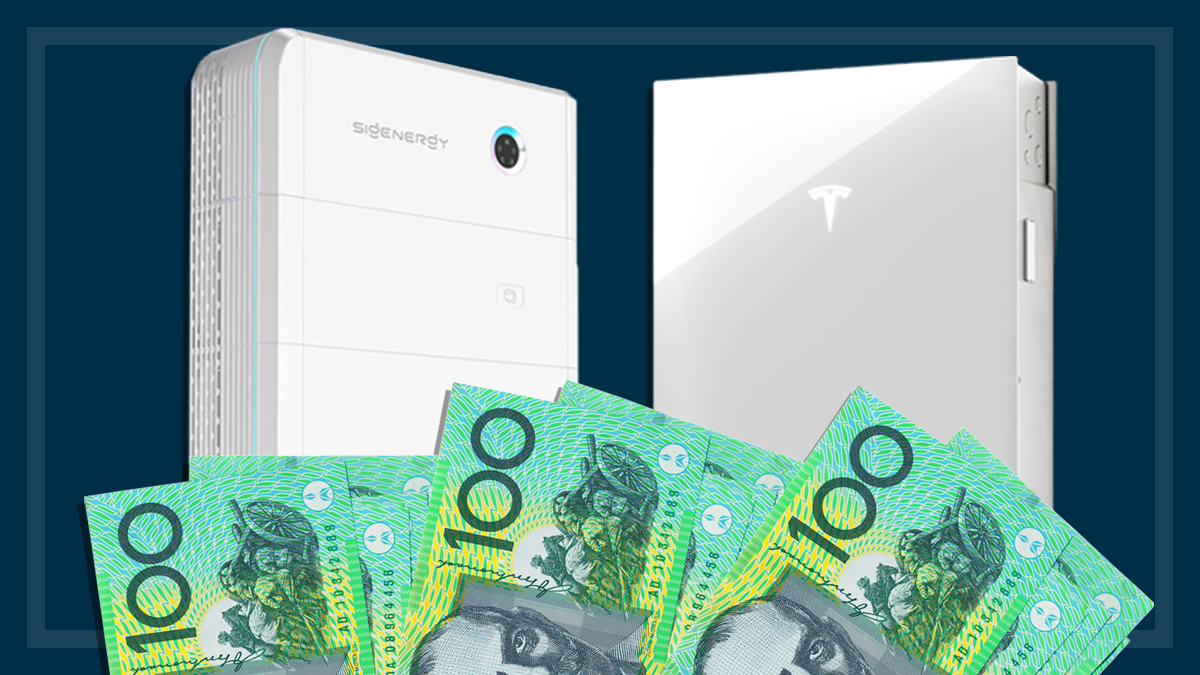Get our independent lab tests, expert reviews and honest advice.
Are solar feed-in tariffs worth it?
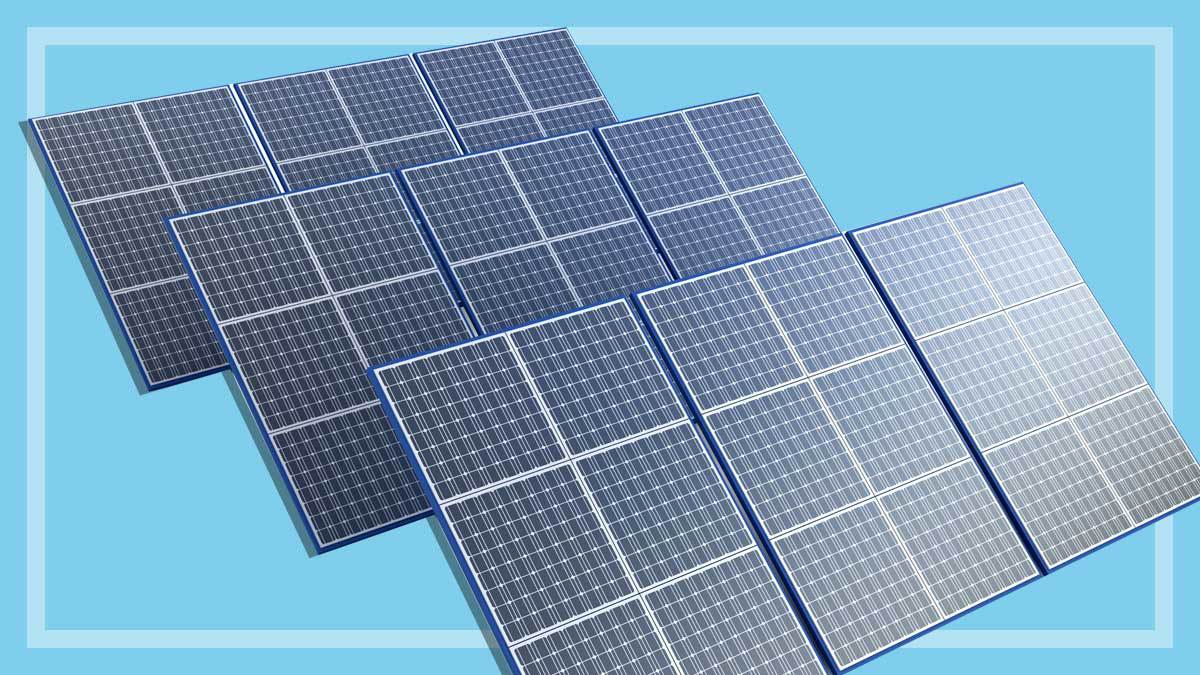
Need to know
- Retailers are paying many Aussie households below 'spot market' rates for their excess solar
- Most solar owners are better off using the electricity they make rather than selling it to the grid
- To get the best value for your excess solar generation, be prepared to monitor prices and switch retailers when there's a better deal
On this page:
Not that long ago, solar energy feed-in tariffs (FiTs) were being offered at what now seem like remarkably high rates.
A FiT is what retailers pay you for the extra electricity generated from your solar panels that your household doesn’t immediately use, and that you sell back into the grid instead.
During the late noughties, the push was on to fire up the industry and boost the uptake of solar rooftop PV systems, with retailers paying high minimums such as 60c for every kilowatt hour of excess solar power that households fed back into the grid.
But the prices of FiTs have fallen significantly since those heady days. So should you just keep your excess energy for yourself?
How much do retailers pay for FiTs?
It’s hard to say, because there’s a wide variation in the prices that retailers pay for FiTs.
When we compared FiTs at comparison site wattever.com.au, minimum rates ranged from 0 to 20 cents per kWh exported in NSW and Queensland, and 0 to 16 cents in South Australia, for example.
“Retailers have no obligation [throughout most of the country] to pay anything for power that is actually fed in,” says energy economist Bruce Mountain. “Some offer nothing, while others offer very high rates because they want to attract customers with solar.
“Often they give with one hand and take with another so they pay a lot more for your fed-in electricity, but they’ll also charge you a lot more if you want to buy electricity.”
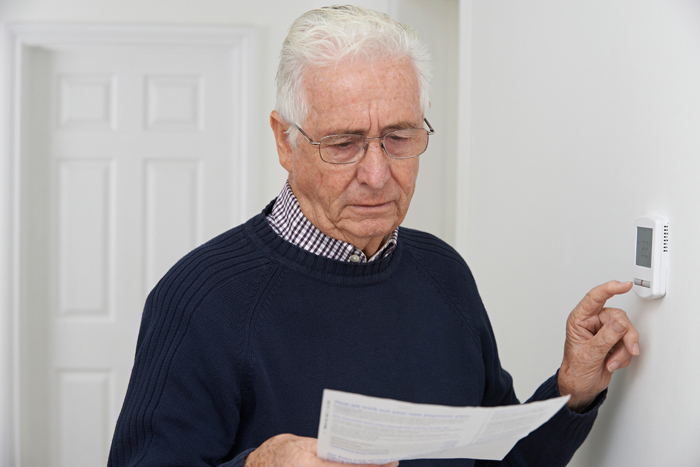
What we do know though is that overall, households aren’t getting the best deal on their excess solar power.
Last year, a Solar Citizens report analysed bills that we supplied them for 10,051 households, 2062 of them with solar rooftop PV. It found that one third of households with solar sell their excess electricity at lower prices than what retailers could buy it for on the ‘spot market’ (prices on the spot market are updated every 30 minutes and reflect the current demand for electricity).
The report concluded: “Retailers profit from this to the extent that they do not pass this on to other customers in lower prices.”
Households aren’t getting the best deal on their excess solar power
Victoria is the only state with a mandatory minimum FiT, which is set by the Essential Services Commission. It’s offered as a ‘flat rate’ of 12c per kilowatt hour (kWh) and a ‘time varying’ rate of 9.9–14.6c per kWh.
Parts of Queensland also have a set minimum rate: the Queensland Competition Authority has set it at 7.842c per kWh for most regional households, while South East Queensland operates within a free market.
FiT rates and solar panel payback times
One of the reasons FiTs were initially set at such high rates was to offset the high cost of installing solar systems and kickstart the industry – while also introducing residents to the principle of lowering emissions.
But in the past six years, installation prices have fallen by about 58%. So even though FiT rates have tumbled, solar PV systems are paying for themselves earlier than before.
“Most [FiT] prices we see now are pretty much aligned with the average wholesale price,” says Dean Lombard, senior energy analyst at Renew.
“We’ve done some analysis of payback periods (for solar systems) in different states and, with the average prices and minimum feed-in tariffs, you’re still looking at a five-to-six year payback period for a lot of places.
“That’s with a moderate amount of use and moderate exports, so I think people nowadays do have better payback times than people who had those high feed-in tariffs.”
Are FiTs still worth it?
While FiTS are, on average, in line with wholesale prices, they’re not really worth it unless you’re selling more electricity to the grid than you’re buying back.
Most households with solar are better off using the electricity they produce rather than selling it back to the grid as a FiT – see How to make the most of excess solar power.
If you’re still not able to use all of the electricity you produce, FiTs can be a handy bonus and will help with your solar panel payback time.
Of course, getting a good deal on your FiTs means a quicker payback time, so it’s worth shopping around to see if you can switch to a better plan.
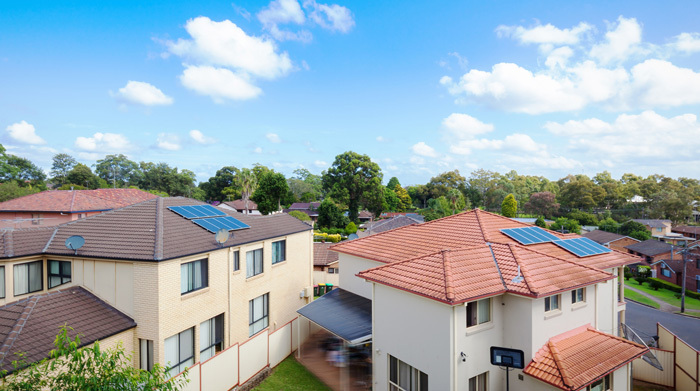
Finding a good deal
Mountain says trying to work out which retailer offers the best deal on FiTs can be tricky.
“There is a choice in the market and [households] can exercise that choice, but it’s difficult for them to do that, and as a consequence many of them lose out,” he says.
Energy retailer Energy Locals is trialling a peer-to-peer platform that lets solar households, businesses and non-solar customers trade their excess electricity using prices that they set themselves, effectively cutting out the ‘middle’ retailer. A trial with 100 to 200 participants, who have been giving feedback on the platform, is also underway.
Ross Gawler, a senior research fellow at Monash University’s faculty of information technology, says such peer-to-peer trading shows promise: “If a retailer can make that work within the regulatory frameworks by getting customers together and effectively getting them to share their resources before there’s a trade with the wholesale market, then it’s possible that you might overall be able to provide a better offering,” he says.
1. Buy a system that suits your energy needs and isn’t excessively large
2. Use as much of what you make as you can (run appliances during daylight hours)
3. Consider buying solar storage or diverters
4. Look for alternative ways to sell your excess power (e.g. peer-to-peer trading)
5. Sell back to the grid but look for the best Feed in Tariffs (FiTs) for your usage
6. Review FiTs regularly, and be prepared to switch providers
How to make the most of excess solar power
Energy Locals founder Adrian Merrick says households should exhaust other measures – including using all their solar energy generation, investing in emerging technologies such as solar diverters, and buying storage as prices of batteries come down – before feeding excess power into the grid.
“Anything that you’re going to have to buy back in from the grid will be at a much higher rate,” he says. “So use as much of what you produce as possible.”
To do this, experts suggest matching your usage to solar production times. In other words, use appliances during daylight hours.
“The only people who should be over-focused on a big feed-in tariff are the people who have really oversized their solar system.”
Lombard says that he agrees that the “cheapest and best way to get value out of your system” is for households to use as much of their solar energy as possible, but he believes many customers would still export significant amounts because larger systems have become cheaper to install while household consumption has come down.
Storing your excess energy in solar batteries is another option, but while solar battery costs are coming down, they’re still not an affordable option for all households.
Case studies
When Matthew Alford and his family built a new house in Victoria’s Dandenong Ranges, they decided to install a 4.5kW solar rooftop PV system.
They also invested in a modular 1.2kW battery that had a small capacity but gave them what Alford describes as “a taste” of the technology that he could then build on in stages when the price of batteries fell.
Alford keeps a close watch on his household’s usage patterns – matching demand with the solar power generated
The system has generated 11.4 megawatt (MW) hours of the 15MW hours they’ve used since February 2017. Of the electricity their solar system has generated, not all of it can be stored in their battery, so 5.82MW hours have been exported to the grid.
Alford shopped around to find the best FiT rates for his area and settled on the 9.9c per kWh then offered by Energy Australia.
He keeps a close watch on his household’s usage patterns – matching his household’s demand for power with the solar power generated in order to use as much of it as possible – but says: “It’s really quite difficult to … narrow down on all the detail and find a provider that actually gives you the best value for money.”
He says he understands the commercial realities that retailers face, in terms of operating and certificate costs and the drive for profits, but believes a payout of 9.9c per kWh is low compared with retail prices.
He understands the commercial realities that retailers faces, but believes a payout of 9.9c per kWh is low compared with retail prices
“I guess we always want as much as we can get,” he says. “But the issue is for each kWh we import, they’re charging around 43c for our peak rate and 23c for our off-peak rate.
“They do offer discounts, and you have to factor that in. But there’s quite a big difference between 9.9c and 43c for the same power that’s just been generated from a different source.
“I feel that the energy company is getting a much better deal when they on-sell excess power I am generating and potentially charging someone at least double what they credit me.”
Alford says he’s still happy with his decision to install solar, but advises people not to rush into the decision.
I feel that the energy company is getting a much better deal when they on-sell excess power I am generating
Matthew Alford, solar owner
“I think it’s a good thing,” he says. “We’ve generated a lot of power that we’d have otherwise paid for.
“But I wouldn’t say that I’d tell everyone to go out and get solar. I’d tell them to be mindful and do their research, and figure out what they’re after, what they’re going to get out of it, and whether it’s a good deal for them or not.”
George Pol Bodetto recently installed a 6.7kW solar system in his family’s home on the NSW North Coast.
His retailer, AGL, pays out a variable FiT that ranges from 11.1c to 20c per kWh depending on the time of the usage.
“I must admit the FiTs never really were a conscious thought on my part when we bought the system,” says Pol Bodetto. “I was more concerned with what we were getting in the system with the panels and inverter.
The FiTs never really were a conscious thought on my part when we bought the system
George Pol Bodetto, solar owner
“I wouldn’t get too hung up on the FiTs. Ideally, you want to produce your electricity and use as much of it as you can.
“It’s never going to go back to those days [of 60c per kWh], so I think you just need to look at what you’re getting, make sure it’s the best for yourself, and the FiTs are just a bonus.
“It’s just a matter of planning how you use your power, basically.”

